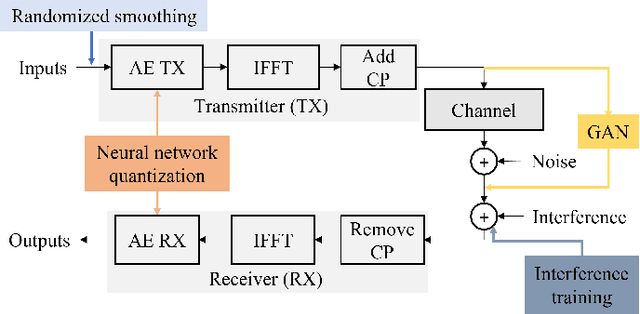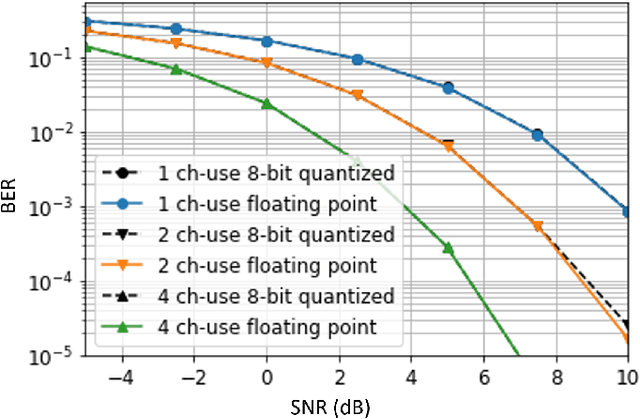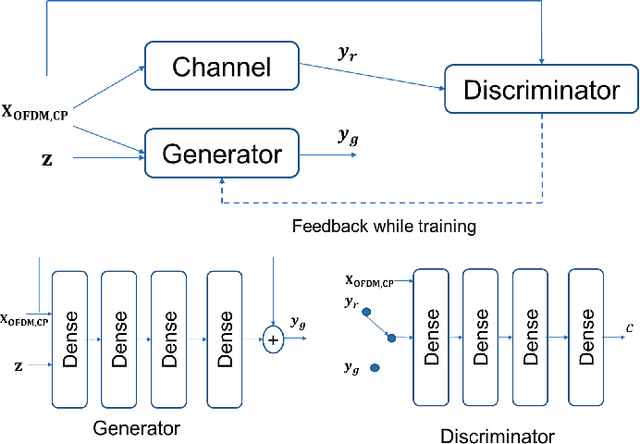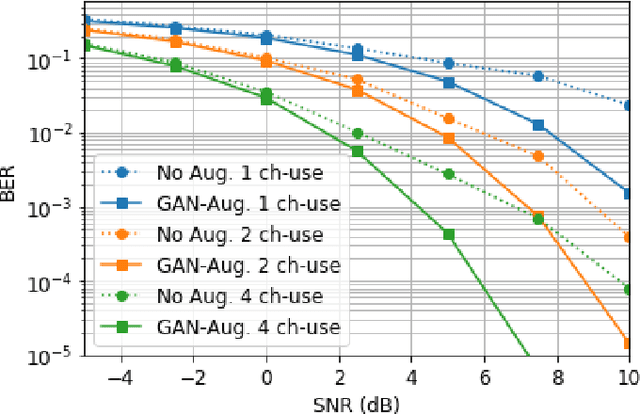End-to-End Autoencoder Communications with Optimized Interference Suppression
Paper and Code
Dec 29, 2021



An end-to-end communications system based on Orthogonal Frequency Division Multiplexing (OFDM) is modeled as an autoencoder (AE) for which the transmitter (coding and modulation) and receiver (demodulation and decoding) are represented as deep neural networks (DNNs) of the encoder and decoder, respectively. This AE communications approach is shown to outperform conventional communications in terms of bit error rate (BER) under practical scenarios regarding channel and interference effects as well as training data and embedded implementation constraints. A generative adversarial network (GAN) is trained to augment the training data when there is not enough training data available. Also, the performance is evaluated in terms of the DNN model quantization and the corresponding memory requirements for embedded implementation. Then, interference training and randomized smoothing are introduced to train the AE communications to operate under unknown and dynamic interference (jamming) effects on potentially multiple OFDM symbols. Relative to conventional communications, up to 36 dB interference suppression for a channel reuse of four can be achieved by the AE communications with interference training and randomized smoothing. AE communications is also extended to the multiple-input multiple-output (MIMO) case and its BER performance gain with and without interference effects is demonstrated compared to conventional MIMO communications.
 Add to Chrome
Add to Chrome Add to Firefox
Add to Firefox Add to Edge
Add to Edge